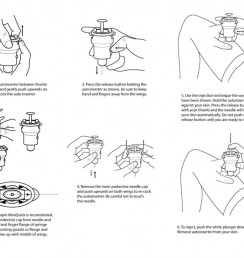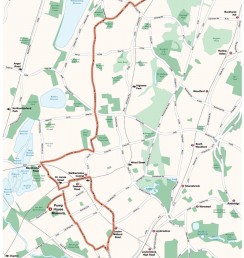Multiplanes
In aviation, a multiplane is a fixed-wing aircraft configuration featuring multiple wing planes–these include biplanes, triplanes and tandem winged aircraft.
Albatros D.III
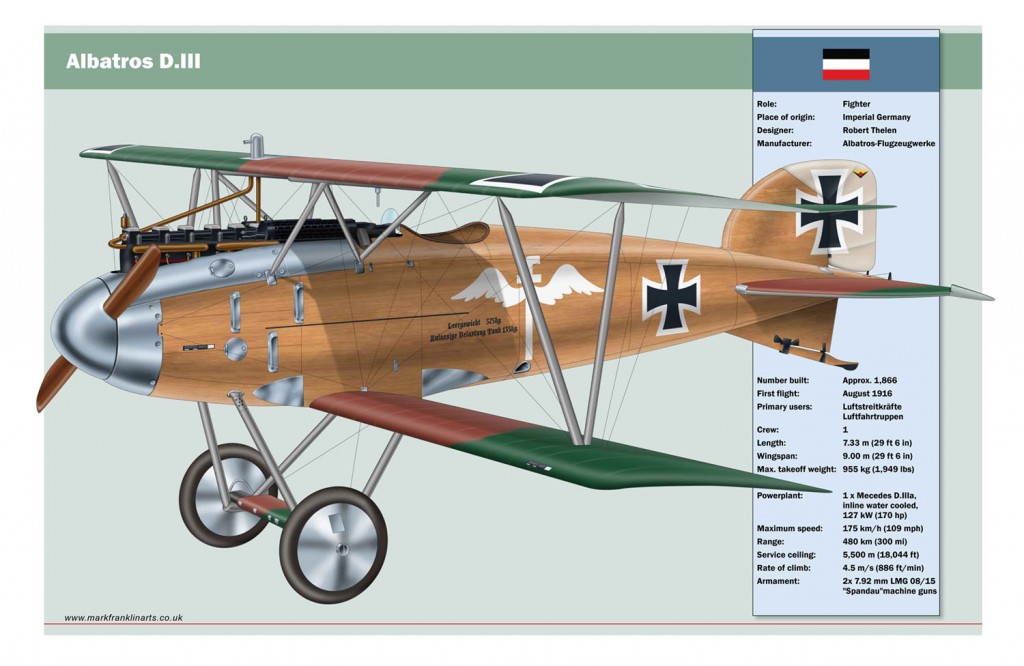
The Albatross D.III was the pre-eminent fighter in the Imperial German Army Air Service’s (Luftstreitkräfte) period of aerial dominance known as “Bloody April” 1917.
With a semi-monocoque, plywood-skinned fuselage, the Albatros has a sesquiplane wing arrangement where the upper wing is longer than the lower wing. The V-shaped inter wing struts led to British aircrews calling it the “V-strutter”.
Bücher Bu 131B

The Bücher Bu 131 was manufactured between 1935-1945 and was the last biplane to be produced in Germany. Comprising both metal and wooden construction, it was designed as a trainer and aerobatic aircraft.
During the Second World War, the aircraft served with nearly all of the Luftwaffe’s primary flying schools as well as the night combat Nachtschlacht Gruppen.
Fairey Swordfish
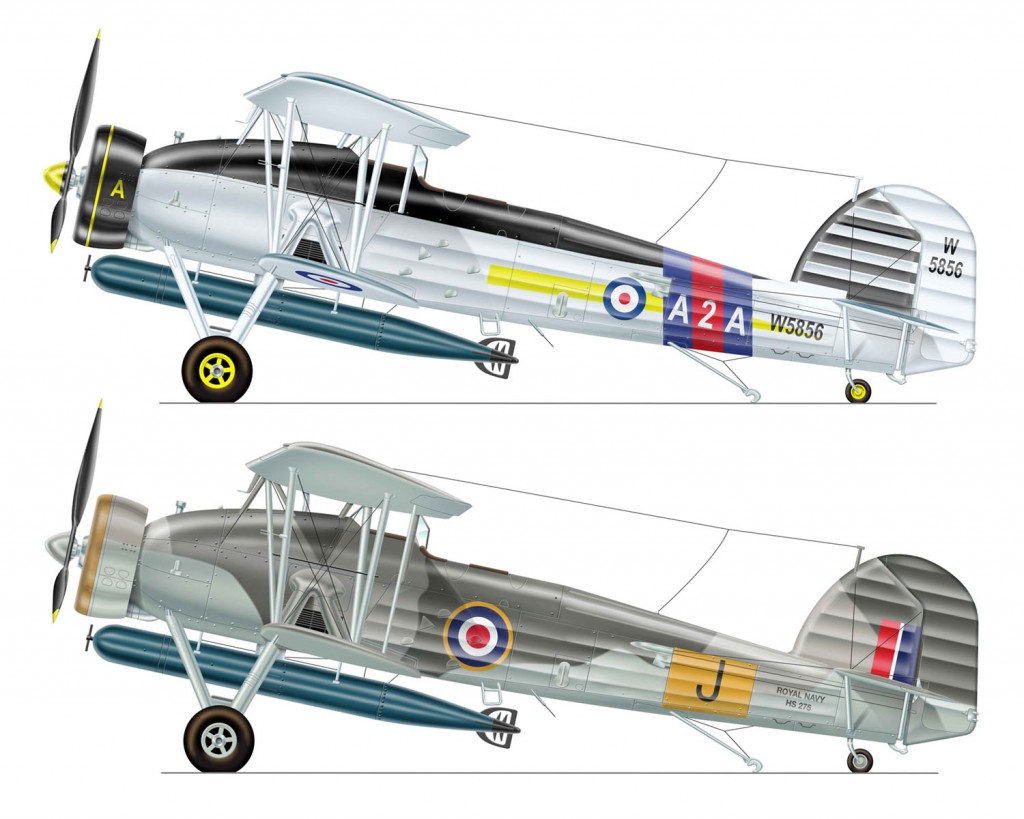
The Swordfish in pre-war and Second World War colour schemes.
Nicknamed the “Stringbag” the Swordfish was a torpedo bomber primarily used by the Fleet Air Arm of the Royal Navy. Although outdated, the Swordfish sank more Axis shipping than any other Allied aircraft, and played a vital role in the sinking of the German battleship Bismark.
Optimal release distance for the Mk XII torpedo was 1,000 yards (910 m) from the target, assuming the aircraft could survive to that distance.
When more sophisticated torpedo bombers became available, the Swordfish was deployed in the anti-submarine role, armed with depth charges or rockets.
Fokker D.VII
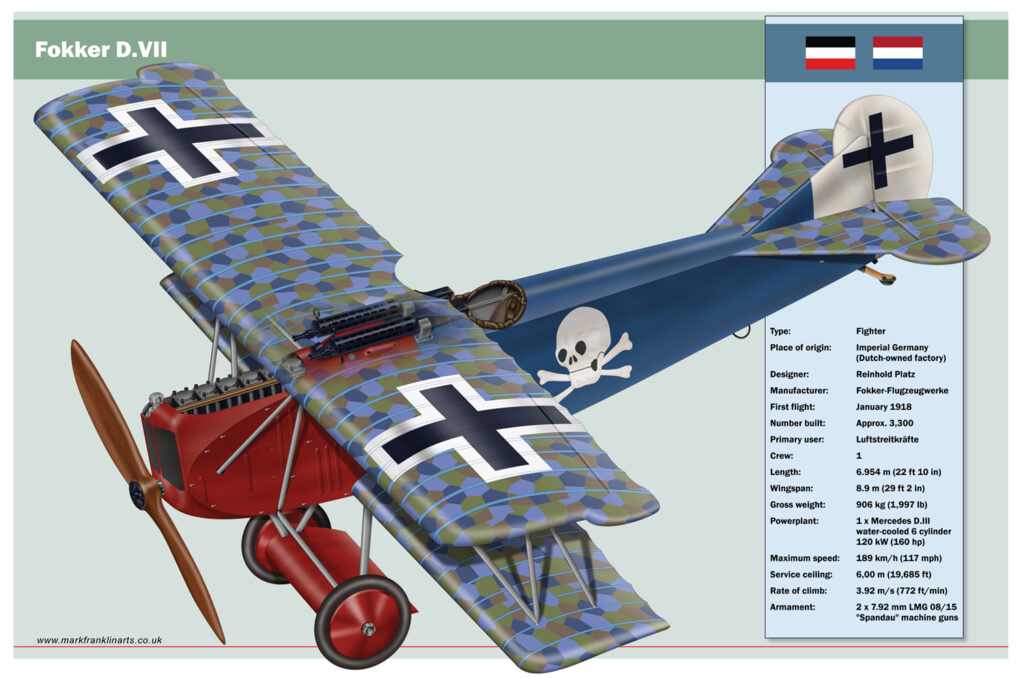
This World War I fighter saw service with the Luftsreitkräft and approximately 3,300 were produced in the second half of 1918.
The aircraft shown here has the wings covered in the printed four-colour Vierfarbiger fabric. Fuselages were often overpainted with colourful paint schemes for the Jasta, or for an individual pilot.
The design was generally well regarded by its pilots, including Herman Göring, who ended the war with 22 kills.
Fokker Dr.I

Often known simply as the Fokker Triplane, the Dreidecker saw widespread service in the spring of 1918.
Slower than its contemporaries, it did offer exceptional manoeuvrability, and Baron Manfred von Richthoven recommended that all fighter squadrons should be equipped with the new aircraft as soon as possible.
Fokker E.III
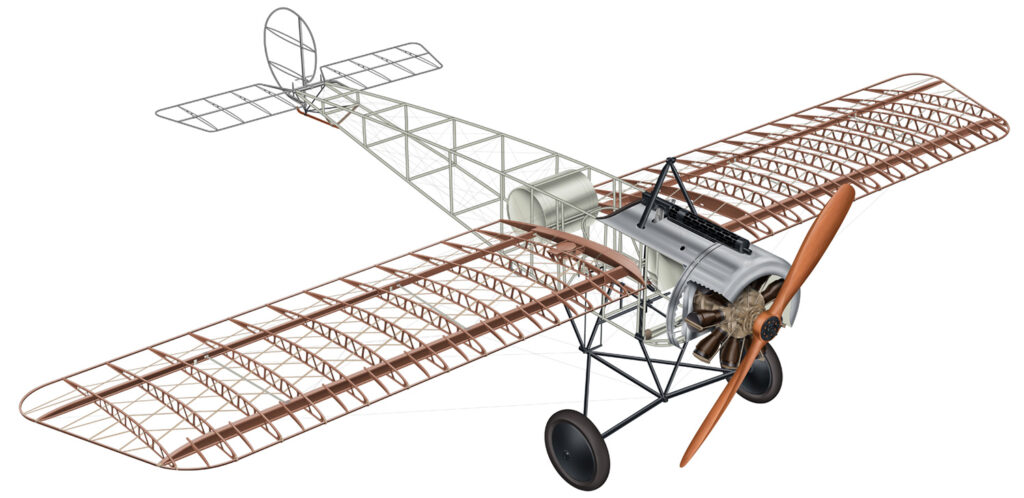
Part of the Science Museum’s collection, this is the only surviving example of the main variant of the Eindecker which made its first flight in 1915. It was armed with a single 7.92 mm Spandau LMG 08 machine gun with 500 rounds of ammunition synchronised to fire through the propellor disc, the first time this had been done, and which enabled the pilot to aim by merely pointing the nose of his aircraft.
It was also highly manoeuvrable, fighter ace Max Immelmann created the Immelmann Turn in this type, which became known as the “Fokker Scourge” to the Allies, who found it to be a formidable foe.
Inexperienced pilot Johann Hvüres mistakenly landed this aircraft at the British aerodrome at St. Omer, allowing it to be test-flown against various Allied types. It was offered to the Science Museum in 1918, but toured the country first under very poor conditions (a tent). It was put on display in the Science Museum in 1923, where the fabric was apparently torn off by visitors.
This does at least show the lightweight tubular steel fuselage frame and the minimalist wing ribs which use no more material than strictly necessary. Of particular note is the white interlaced diagonal tapes used for warping the wings.
Polikarpov R-5
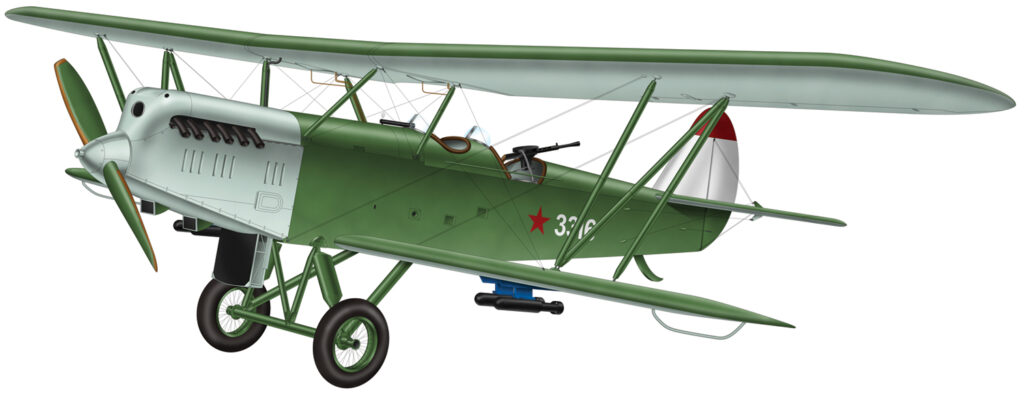
This was the standard light bomber and recconaisance aircraft for the Soviet Air Force for most of the 1930s. More than 100 regiments were equipped with the type and it saw action in the Soviet invasion of Poland in 1939 and in th 1939-40 Winter War against Finland.
The aircraft shown here is the only known original example and is on display at the Central Airforce Museum, Monino. Moscow Oblast, Russia.
SE 5a
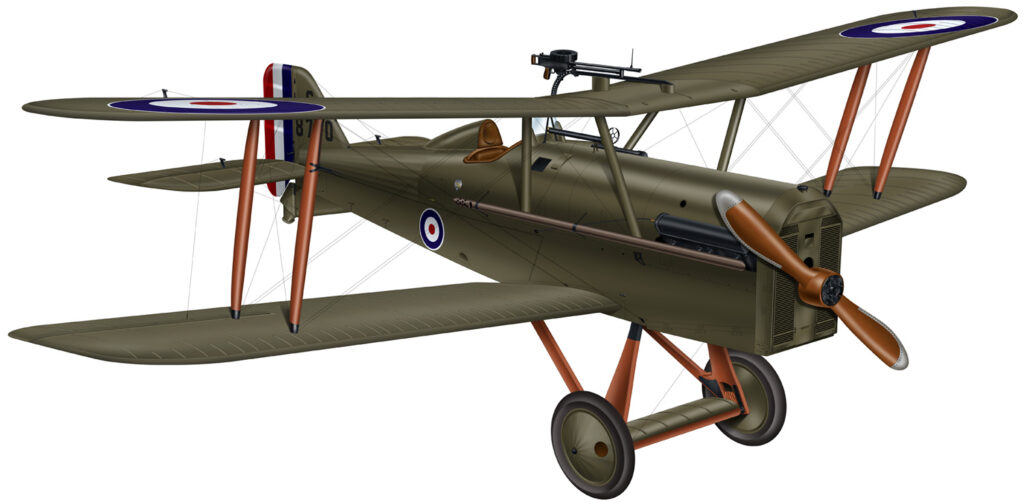
Developed at the Royal Aircraft Factory as a single-seat fighter, the SE5a made its first flight on 22 November 1916. The design had considerable strength enabling it to withstand high-g manoeuvres and was relatively resistant to battle damage.
At 138 mph it was one of the fastest aircraft of the war and although not as agile as the Sopwith Camel it was a stable gun platform that allowed pilots to open fire at a greater distance.
A single Vickers .303 machine gun was mounted in front of the cockpit using Constaninesco synchronising gear to fire through the propellor. A .303 Lewis light machine gun on a Foster mounting was attached to the centre section of the upper wings and this allowed pilots to attack high-flying enemy aircraft from below and made the SE5a the first fighter to carry two machine guns.
Vickers Vimy IV
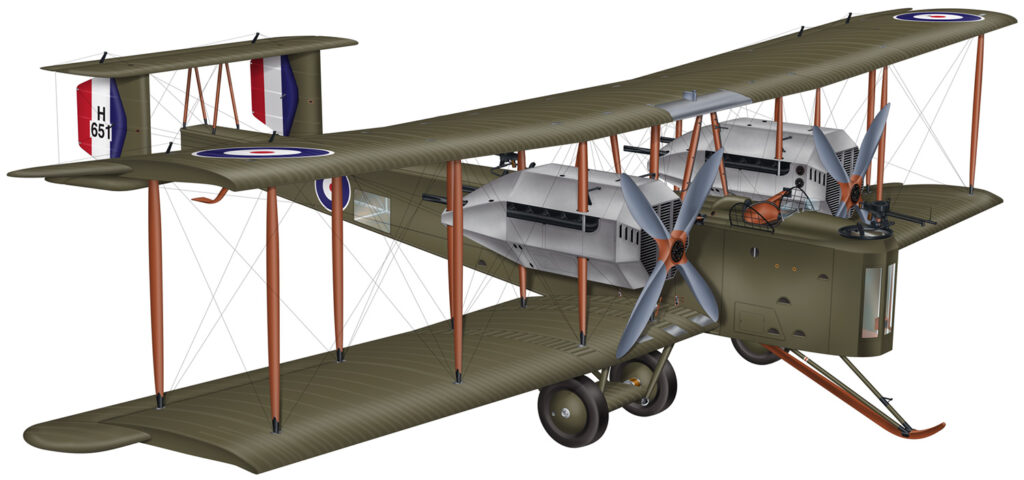
The Vickers Vimy was designed to accommodate a three-man crew and a payload of twelve 250 lb bombs in the internal bomb bay. Some aircraft could carry an additional six bombs on external racks, depending on the engine fitted.
A rear gunner had a .303 Lewis gun mounted on a Scarff ring with up to six drum magazines of 48 rounds each. The rear fuselage had windows to allow the gunner to give warning of enemy fighters in what would otherwise be the Vimy’s blind spot below and behind.
The front gunner also had a Lewis gun but only four magazines. He also served as bombardier using a High Altitude Drift Mk 1a bombsight.
Although the Vimy did not see active service it would form the core of what was to become RAF’s Bomber Command.

